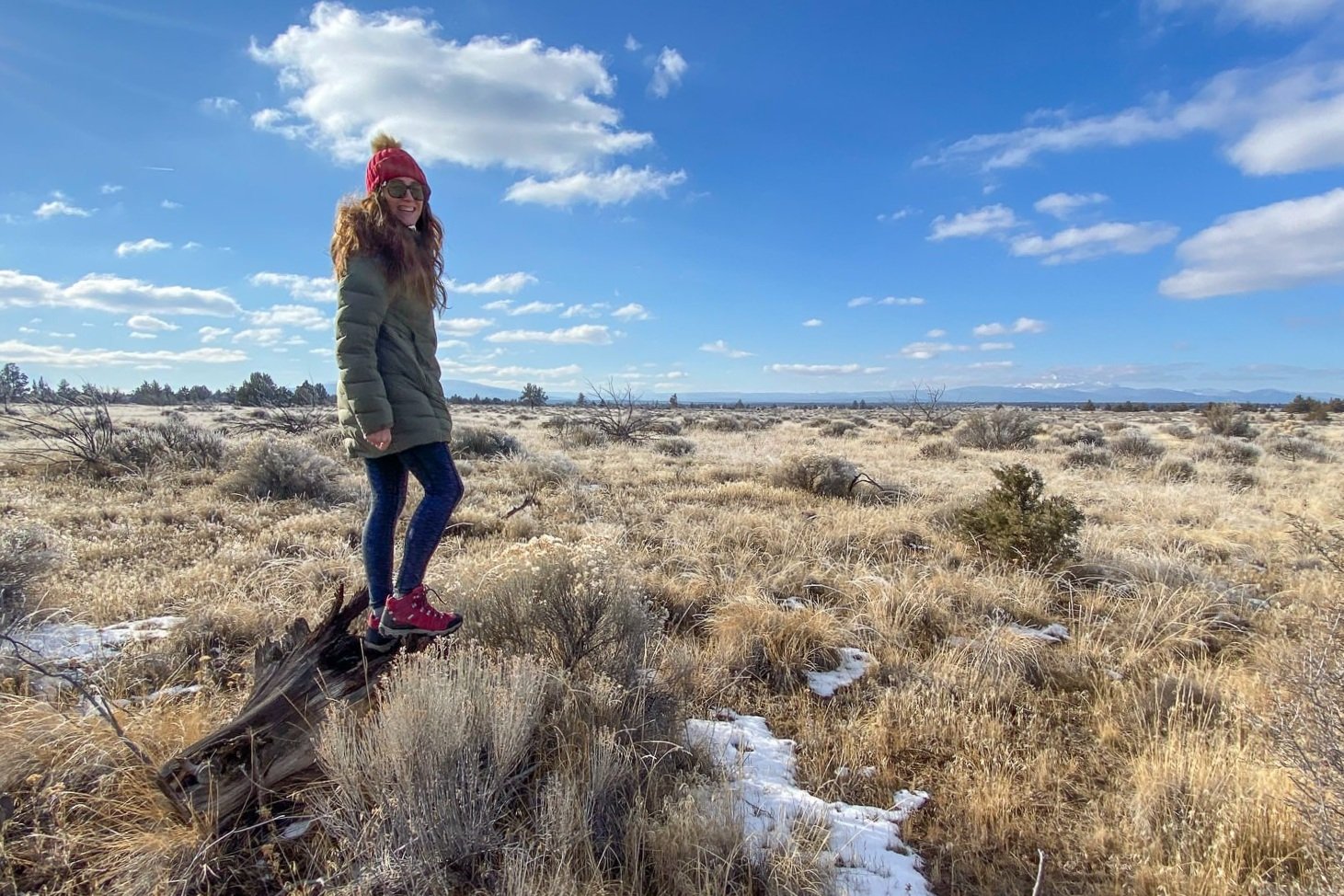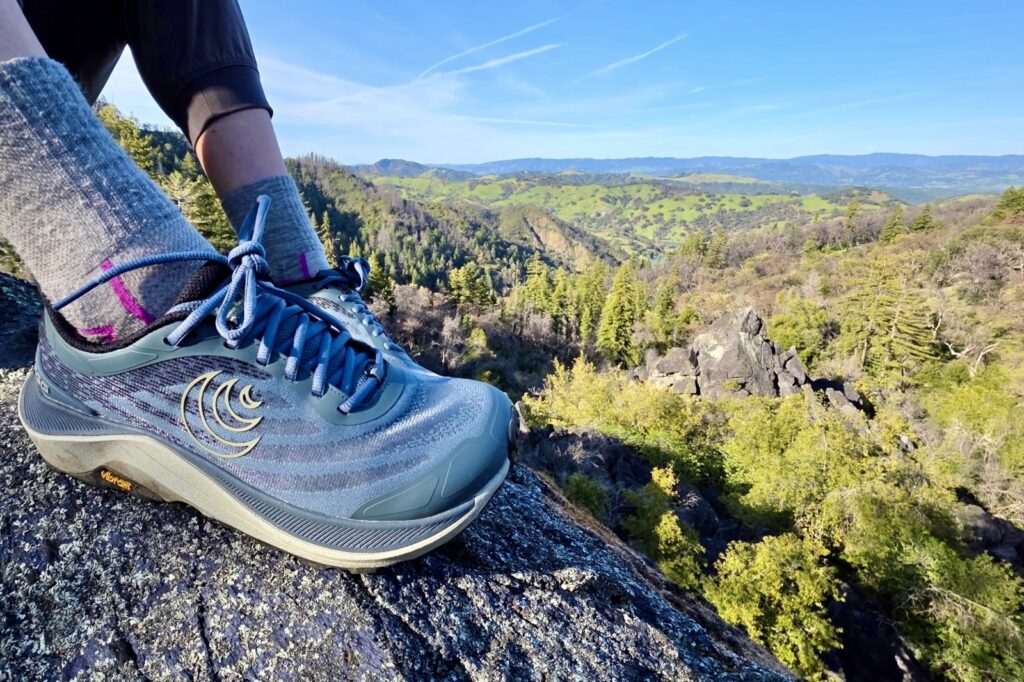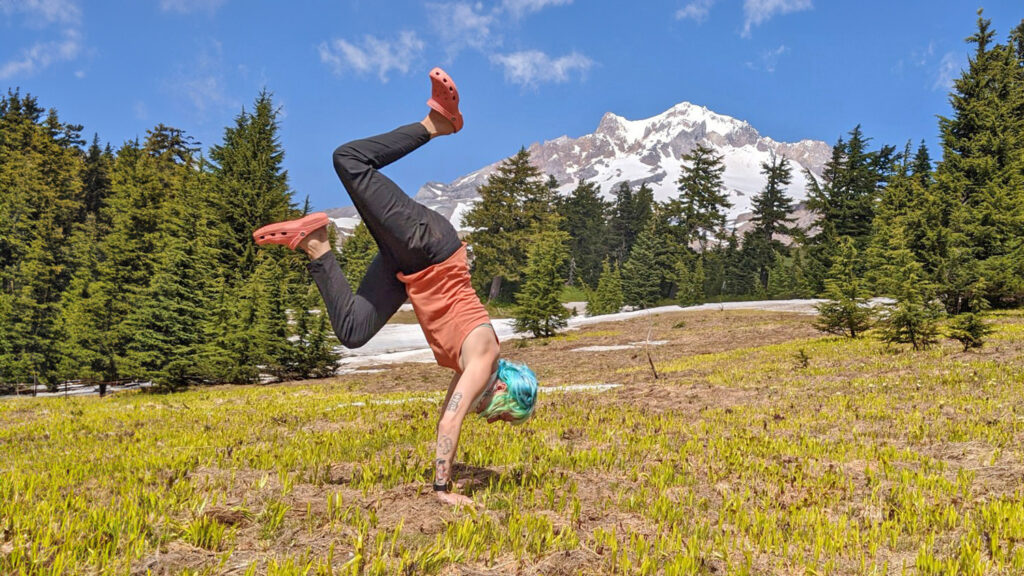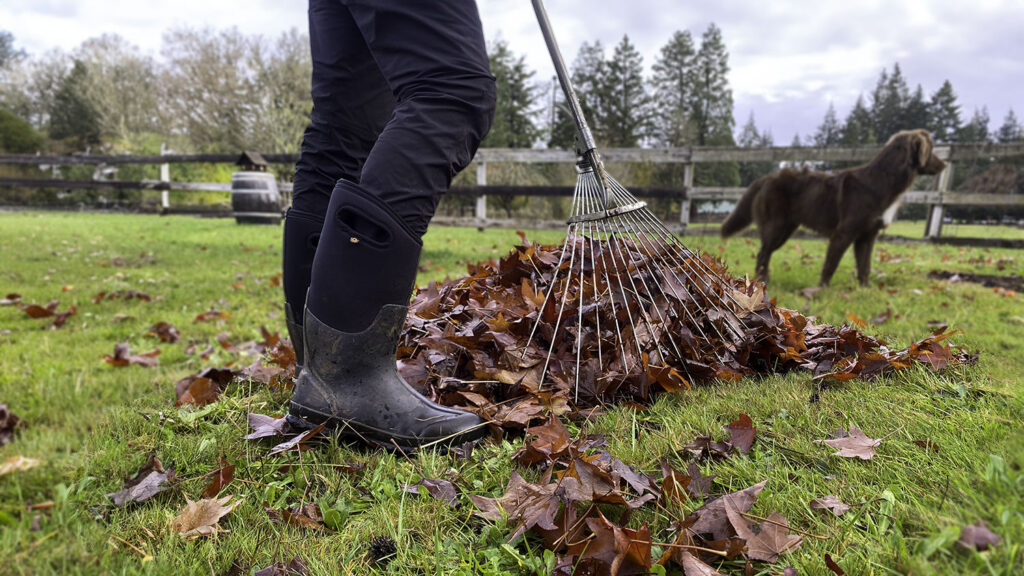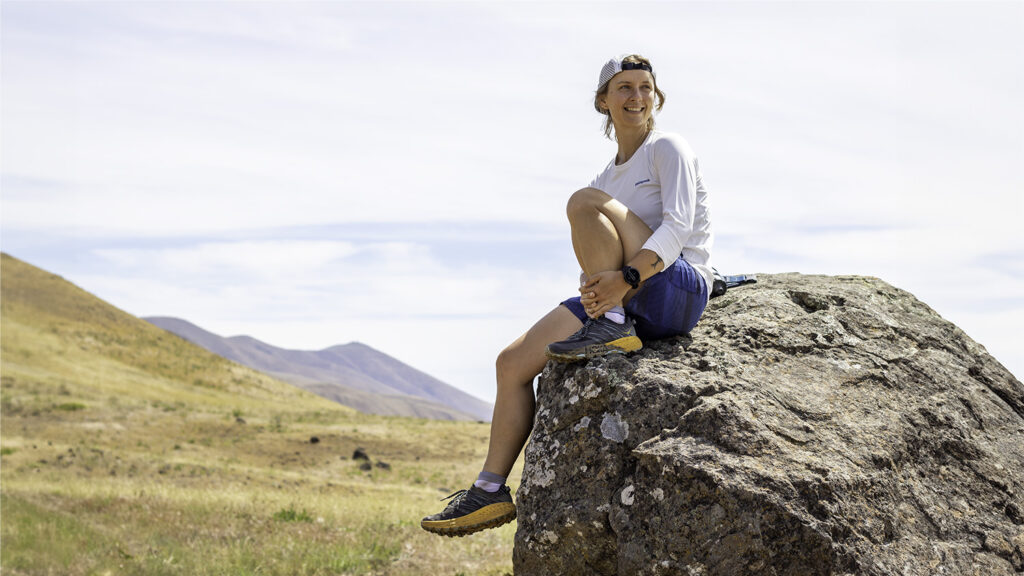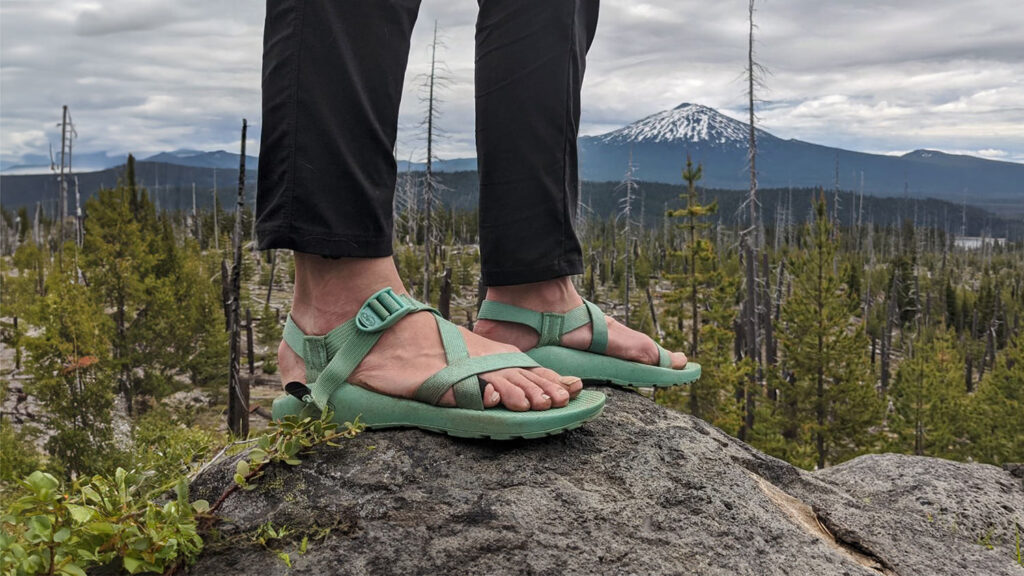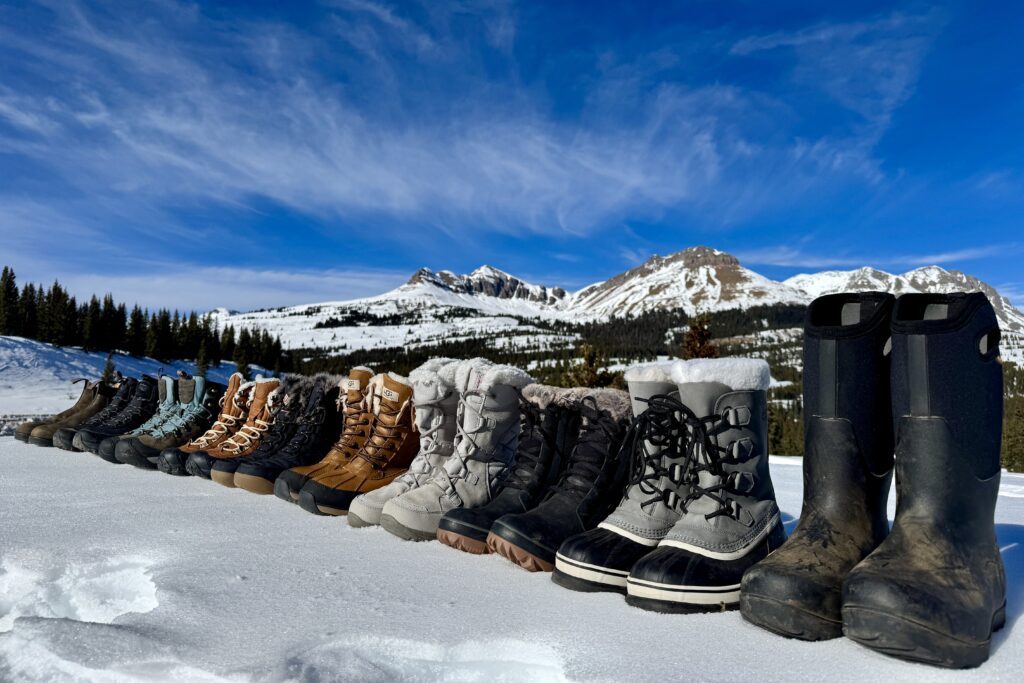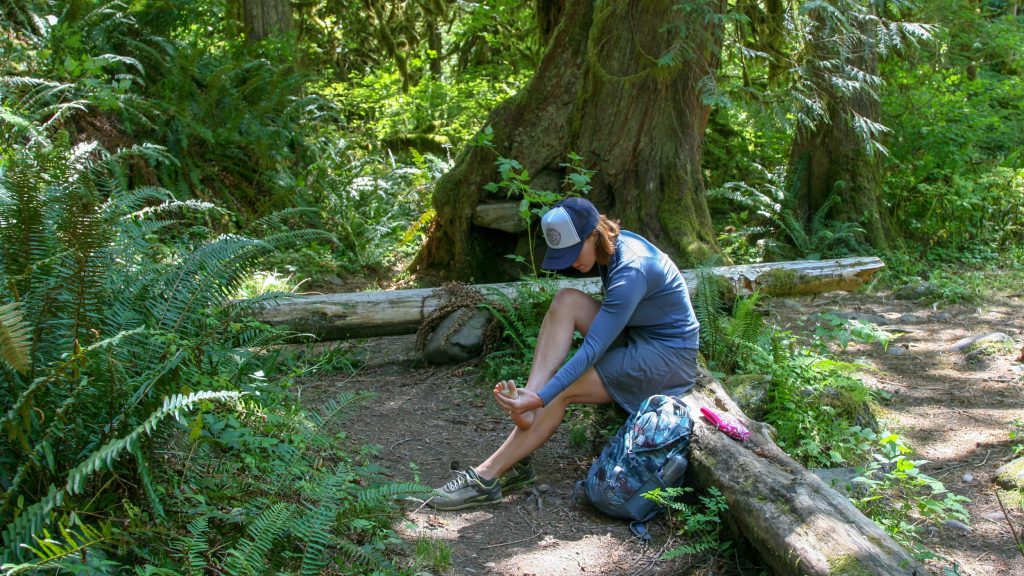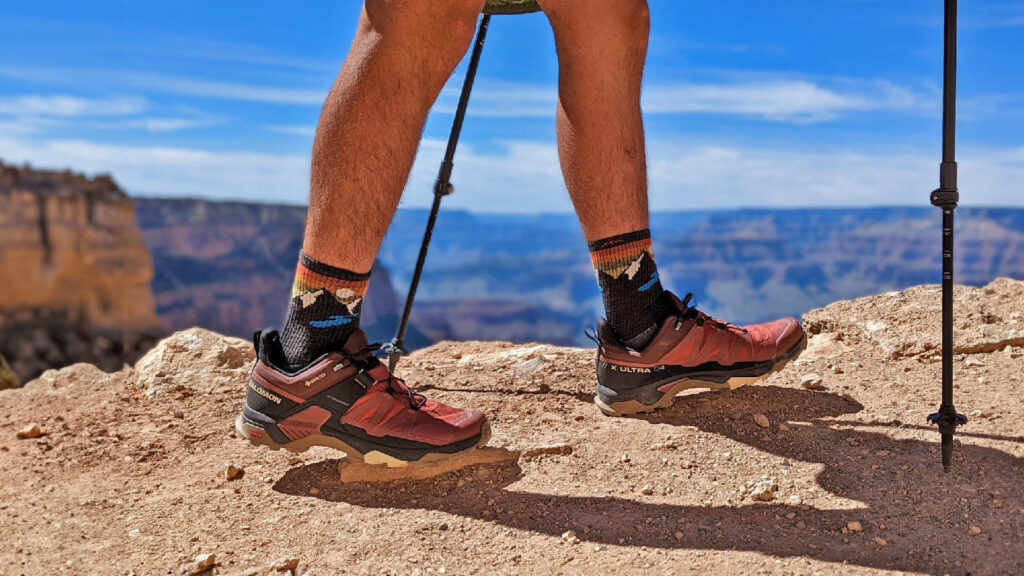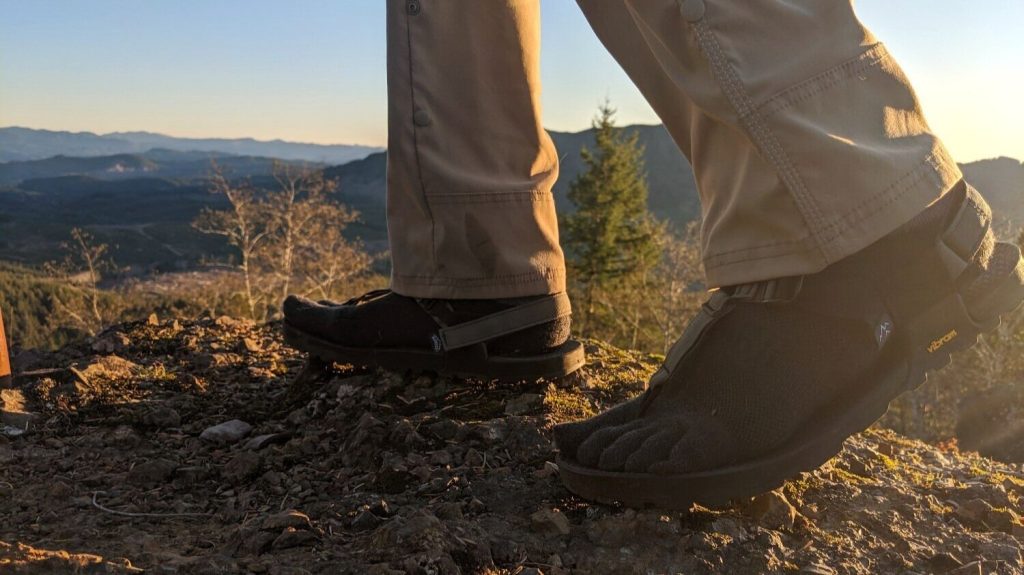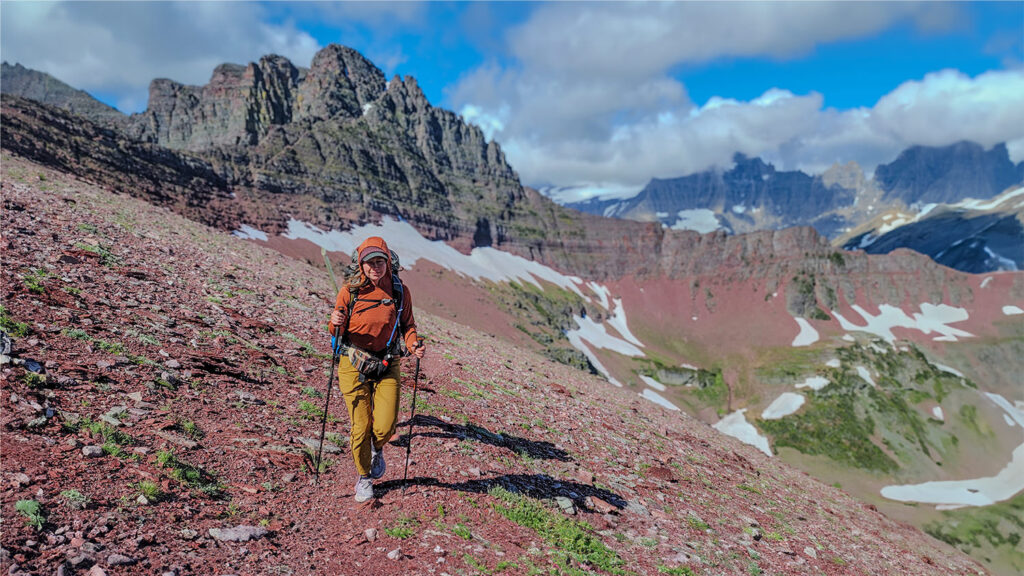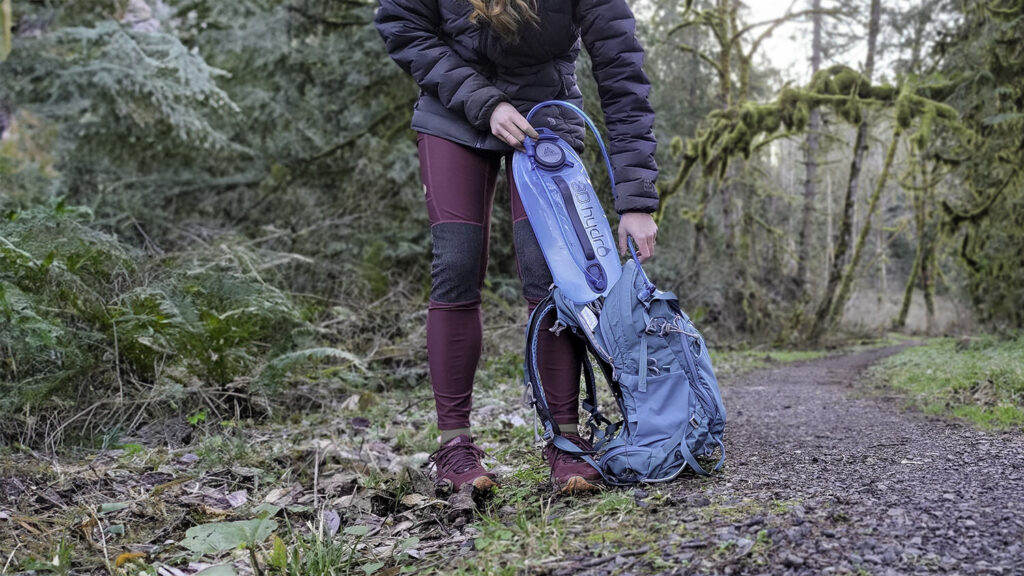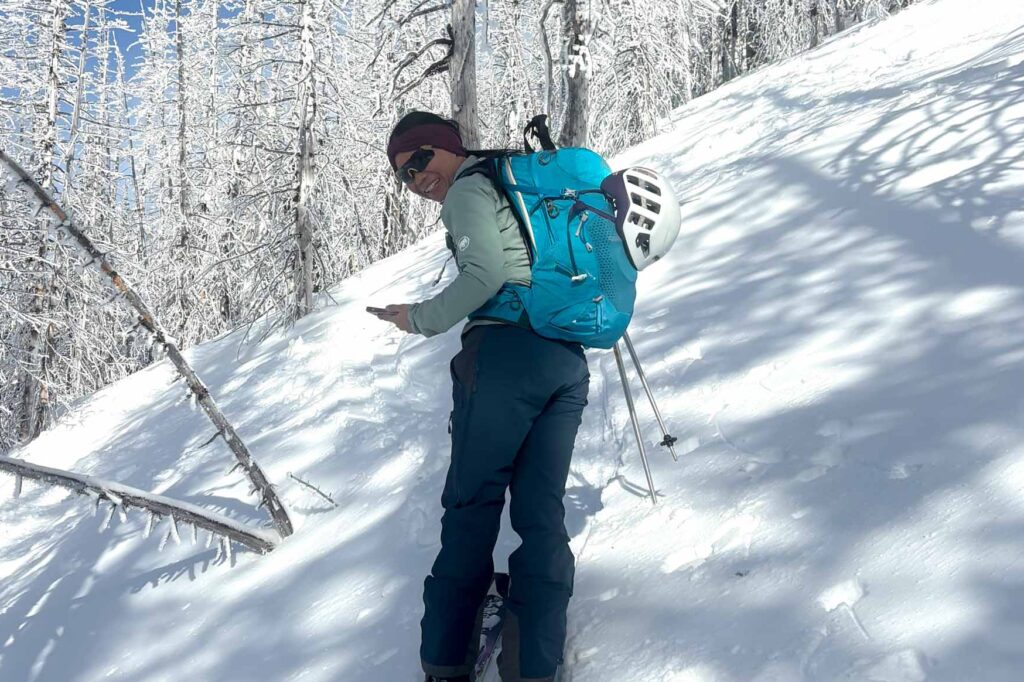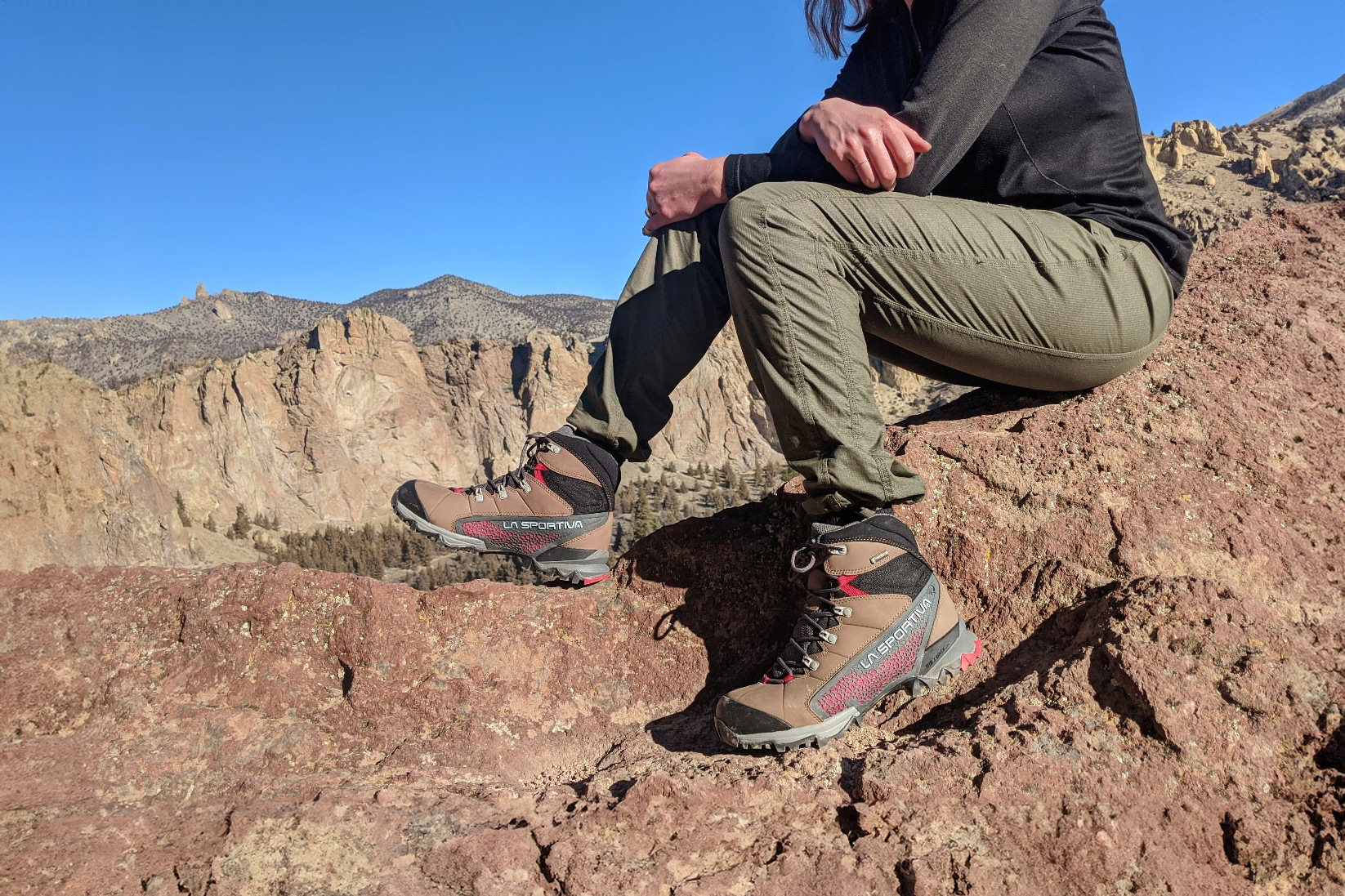
Over the years, our team has tested over 40 pairs of the most promising boots on the market. We’ve summited high peaks in Colorado, traversed icy ridges in Oregon, and traveled off-trail in Arizona to craft our expert boot reviews.
In this guide, we’ll help you find a pair of hiking boots that has it all. From brands like Lowa, Merrell, Salomon, Keen, and more we look at comfort, ankle support, low weight, traction, weather resistance, and durability.
And for more info, check out some of our other popular gear guides:
Quick Picks for Women’s Hiking Boots
Check out this quick list of our favorites if you’re in a hurry, or continue scrolling to see our full list with in-depth reviews.
Best Hiking Boots Overall: Lowa Renegade EVO GTX ($265)
Best Balance of Weight & Durability: La Sportiva Nucleo High II GTX ($239)
Supportive Hiking Boots Built to Last: Salomon Quest 4 GTX ($230)
Lightweight Hiking Boots That Don’t Sacrifice Durability: Women’s Salewa Alpenrose 2 GTX ($190)
Best Lightweight Hiking Boots: Salomon X Ultra 4 GTX ($175)
A Comfortable Choice for Lightweight Backpackers: Topo Trailventure WP ($180)
Best Wide-Fit Hiking Boots: KEEN Targhee IV WP ($165)
Most Supportive Hiking Boots: Oboz Bridger WP ($200)
Best Budget Hiking Boots: Merrell Moab 3 WP ($150)
Budget-Friendly Hiking Boots With Great All-Around Performance: Vasque Breeze ($160)
Ultralight Hiking Boots With a Wide Toe Box: Women’s Altra Lone Peak 9 Waterproof Mid ($180)
What’s new
We’ve analyzed our old favorites against fresh hiking boot models to make sure we’re recommending the best of the best. We’ve updated all our reviews with more long-term testing results, and we’re working on some new reviews of hiking boots that will join the ranks of our top picks this season.
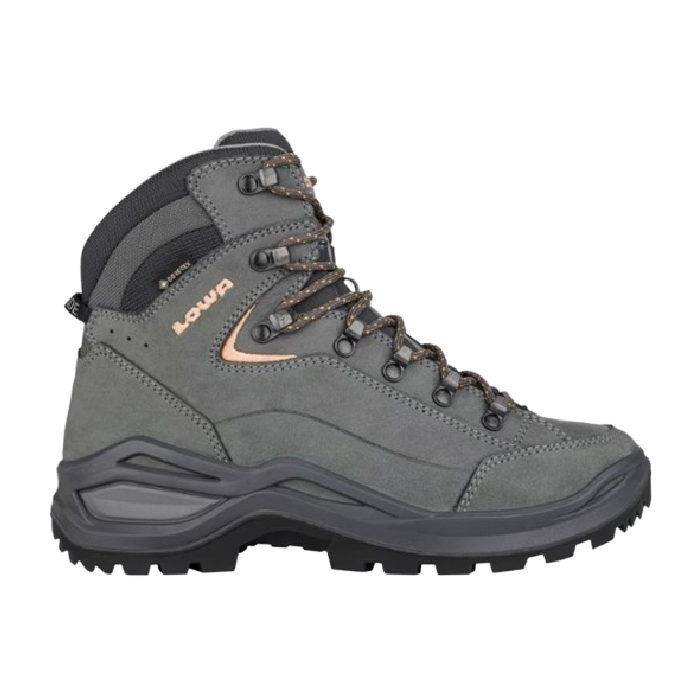
Women’s Lowa Renegade EVO GTX
Best Hiking Boots Overall
CleverHiker Rating: 4.6/5.0
Price: $265
Weight (Pair): 2 lb. 6.1 oz.
Upper Material: Nubuck leather/GTX membrane
Pros
- Exceptionally supportive
- Above-average durability
- Outstanding traction on a variety of surfaces
- Good for backpacking with heavier loads
- All-day comfort
- Stylish
- Wide & narrow sizes available
Cons
- Expensive
- Heavier than some
- Require longer break-in period
The Lowa Renegade EVO GTX offers exceptional durability and protection for hikers who regularly tackle tough terrain with a heavier load.
The Renegades come in at a steep price, but their durability makes them a worthy investment. The upper is constructed with tough Nubuck leather, the midsole is made with polyurethane that won’t buckle under heavy loads, and the outsole features premium Vibram rubber. The Renegades are built with truly high-quality materials and craftsmanship, so they’re certainly money well-spent.
We often find that boots with this level of support feel overbuilt or restrictive, but that’s not the case with the Renegades. After an initial break-in period, these boots are quite comfortable to wear for extended outings thanks to the ample padding in the collar and the amount of space in the toe box. On top of that, the Renegades come in both wide and narrow sizes – so most folks will be able to find an agreeable width for their feet.
The highly varied lug pattern on the Renegades works well on all manner of terrain – we’ve yet to find its limitation. Combine all of that with the ultra-stable frame, and you’ve got a confidence-inspiring boot that’s dang near perfect.
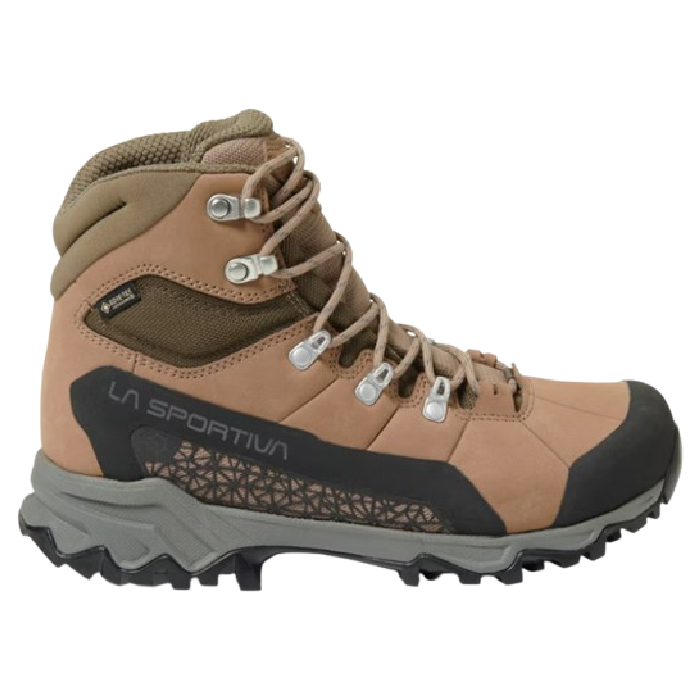
Women’s La Sportiva Nucleo High II GTX
Best Balance of Weight & Durability
CleverHiker Rating: 4.5/5.0
Price: $239
Weight (Pair): 1 lb. 10.8 oz.
Upper Material: Nubuck leather/GTX SURROUND membrane
Pros
- Lightweight but rugged
- Breathable for a waterproof boot
- Good ankle support but not too stiff
- Above-average durability
- Excellent traction
- Stylish
- Good for lightweight backpacking
- Protective toe cap
- Wide sizes available
Cons
- Expensive
- Require some break-in
The La Sportiva Nucleo High II GTX boots are exceptionally lightweight for how durable they are, and they’re decently breathable for waterproof boots. These stylish hikers are more comfortable than most other boots that offer a similar level of support, so they’re an awesome choice for lightweight backpackers and day hikers putting up big-mile days.
The high collar of the Nucleos provides ample ankle support, but they still offer more flex than other ultra-supportive models. Hikers with a pack weight under 35 pounds will likely enjoy the more streamlined build of the Nucleos, but any heavier than that and you’d probably be happier with the Lowa Renegades above or the Salomon Quests below.
The upper and soles of the Nucleos are somewhat stiff, so you’ll need to break them in before they’re at peak comfort, and you may want to add aftermarket insoles if you prefer a soft, cushioned feeling underfoot. But overall, we find the Nucleos extremely comfortable and highly recommend this modern take on traditional hiking boots for any hiker needing solid support at a low weight.
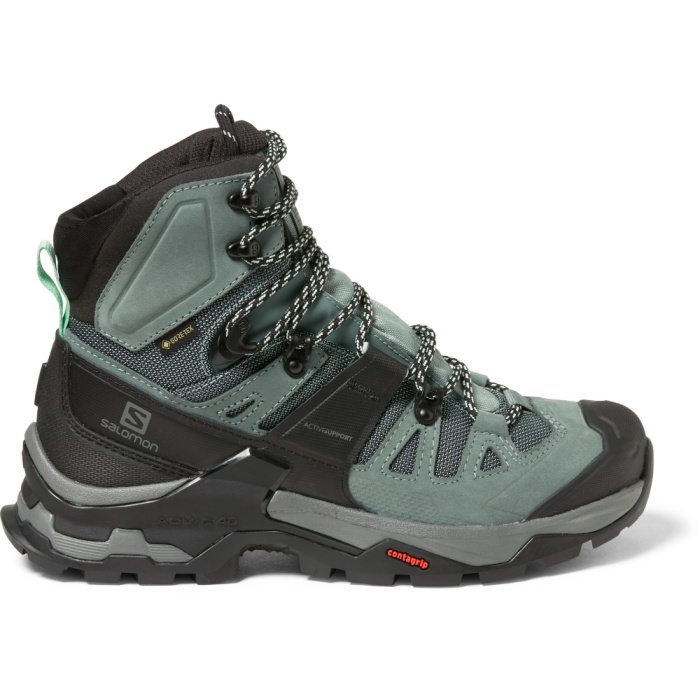
Women’s Salomon Quest 4 GTX
Supportive Hiking Boots Built to Last
CleverHiker Rating: 4.5/5.0
Price: $230
Weight (Pair): 2 lb. 10.9 oz.
Upper Material: Leather/textile/GTX membrane
Pros
- Excellent ankle support
- Above-average durability
- Exceptional traction
- Supportive soles
- Good for backpacking with a heavier load
- Protective toe cap
Cons
- Expensive
- On the heavy side
- Require some break-in
The Salomon Quest 4 GTX offer some of the most robust ankle support of any of the hiking boots on our list, so they’re a great choice for hikers seeking maximum stability. Their durable materials and aggressive traction – in combination with their supportive design – will keep you moving confidently on the most rugged terrain.
These boots are on the heavier side, but that can be a benefit if you tend to hike with a backpack that’s over 40 pounds. Burlier hiking boots like the Quests won’t lose their support under a heavy load like lightweight footwear does. And they still feel more nimble than the other more traditional boots on our list thanks to their well-balanced design.
The Quests come at a high price, but they’re worth the cost as you’ll be getting a solid pair of hiking boots that will remain comfortable and supportive over several seasons of hiking.
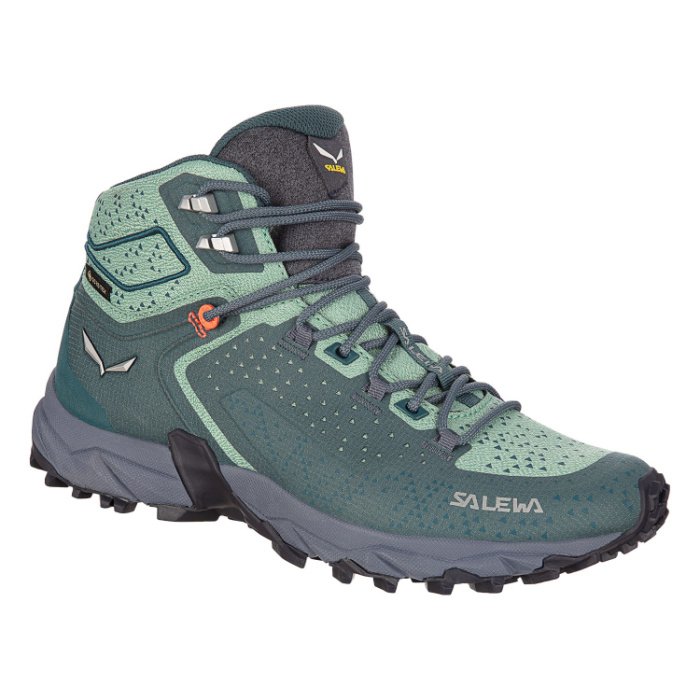
Women’s Salewa Alpenrose 2 GTX
Lightweight Hiking Boots that Don’t Sacrifice Durability
CleverHiker Rating: 4.4/5.0
Price: $190
Weight (Pair): 1 lb. 9.8 oz.
Upper Material: 3F System with Kevlar Cables/mesh/GTX Extended Comfort
Pros
- Lightweight
- Very little break-in required
- Very durable for the weight
- Exceptional traction
- Good for lightweight backpacking
Cons
- Less supportive than some
- May be too narrow for some
The Salewa Alpenrose 2 GTX have an awesome balance of low weight and durability. The material of these hiking boots contains Kevlar cables in the upper, which gives them comparable durability to full-grain leather boots without weighing you down.
The Alpenrose break in quickly and are much more flexible than many other hiking boots. Though they’re not as supportive as some of the burlier boots on our list, hikers who just want the extra waterproofing and protection of a high-cut boot – without all the stiffness – will love these.
The toe box of the Alpenroses is on the narrow side, so hikers with wide feet or bunions may not prefer this fit. The La Sportiva Nucleos above offer a similar feel and comparable performance with a bit more room to wiggle your toes if you need more space.
The Salewa Alpenrose boots have a deep, highly varied traction pattern with sticky lugs, so they work well on most types of terrain. But they’re especially at home on rocky mountain trails. These boots are some of our top picks for backpacking with a lighter load around 30 pounds or less.
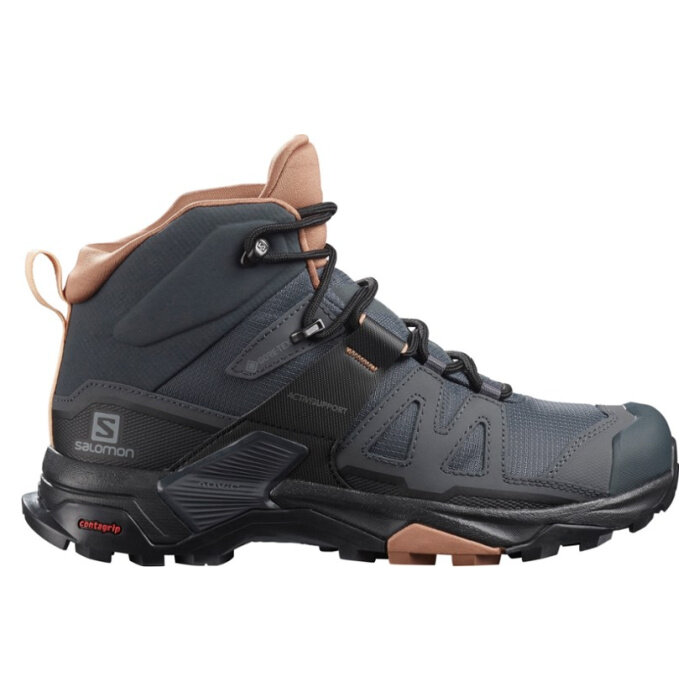
Women’s Salomon X Ultra 4 GTX
Best Lightweight Hiking Boots
CleverHiker Rating: 4.4/5.0
Price: $175
Weight (Pair): 1 lb. 10.1 oz.
Upper Material: PU-coated leather/textile/GTX laminate
Pros
- Light & nimble feel
- No break-in needed
- Exceptional traction
- Very durable for the weight
- Good for lightweight backpacking
Cons
- Less ankle support than some
- Not as durable as a full-leather boot
Comfort is the name of the game with the Salomon X Ultra 4 GTX boots. They’re flexible, they feel great right out of the box, and they’re exceptionally lightweight for boots, so they’re an excellent choice for backpackers who keep their pack weight around 35 pounds or under.
While the X Ultras aren’t as supportive at the ankle as the burlier models on our list, they’ll feel like a dream to those looking for the protection and stability of a boot without the weight and bulk of traditional options. Plus the flexible collar allows for more movement around the ankle which we find more ideal for most occasions than a stiff, locked-in feel. Instead, The X Ultras employ a wing at the midfoot to provide stability for confidence on uneven terrain.
Overall, we really like the X Ultras, and we highly recommend them to anyone who wants a lightweight hiking boot that’s comfy enough for long distances with a lighter load.
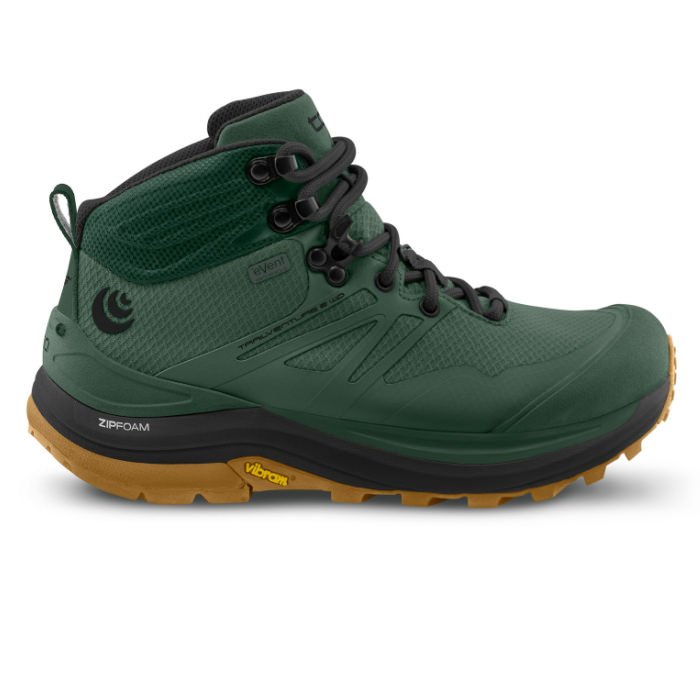
Women’s Topo Trailventure 2 WP
A Comfortable Choice for Lightweight Backpackers
CleverHiker Rating: 4.2/5.0
Price: $180
Weight (Pair): 1 lb. 12.2 oz.
Upper Material: Mesh/eVent liner
Pros
- Ultralight
- Affordable
- Wide toe box
- No break-in required
- Flexible
- Excellent traction
- Good for lightweight backpacking
Cons
- Less durable than some
- Less supportive than others
The Topo Trailventure 2 WP are some of the most comfortable boots we’ve ever tested. They have a wide toe box, which is excellent for anyone, but especially those with wide feet, bunions, or those susceptible to getting toe blisters.
We love having space for our toes to spread naturally and we like our shoes to be on the looser side rather than tight, so the Trailventures work well for even the most narrow-footed members of our team. That said, they may not be right for every foot shape. Our recommendation – order them and try them on well in advance of any major trip. Chances are, you’re going to love ‘em.
The Trailventures are also the lightest boots on our list, weighing less than a pound each. They don’t have the longevity of leather boots, but we think it’s well worth the tradeoff to feel more agile on the trail. We’ve worn the Trailventures for everything from wet fall/spring hikes to snowshoeing, and we’ve loved them every time.
The Trailventure 2 is similar to the popular Altra Lone Peak Hiker 2. Though less well-known, the Trailventures are gaining traction in the industry. They’re a bit more cushioned in the sole and cuff and have a slight heel-to-toe drop (5mm). We give the Trailventures the slight edge because they’re less expensive, and they take less getting used to than a zero-drop shoe.
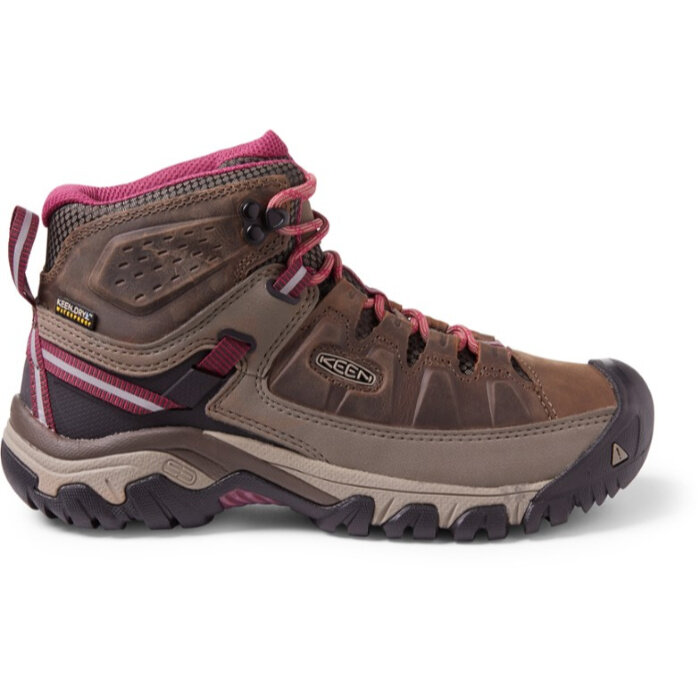
Women’s KEEN Targhee IV WP
Best Wide-Fit Hiking Boots
CleverHiker Rating: 4.2/5.0
Price: $170
Weight (Pair): 2 lb. 2.6 oz.
Upper Material: Oiled nubuck leather/KEEN.Dry membrane
Pros
- Less expensive
- Wide fit
- Excellent traction
- Very little break-in required
- Very beefy toe cap
- Band at heel dials in fit
- Wide sizes available
Cons
- Less supportive at the ankle than some
- Less durable than some
If you like a boot with a little extra wiggle room in the toe, the KEEN Targhee IV Mid WP may be just the right fit. They’re designed with an extra wide toe box – wider sizes are also available – and they require very little break-in to achieve a comfy-all-day fit.
The lacing system on the Targhees includes a unique band that attaches behind the heel to give a secure, locked-in feeling that helps with stability on uneven terrain. And the varied lug pattern on the sole provides superb traction on a variety of trail types.
Those who like a lot of ankle support will probably find these boots to be a bit less protective than some of the others on this list, but we view them as a good balance between support and flexibility. Overall, hikers looking for a wide-fitting boot at a great value price should keep the Targhees at the top of their list.
Though it hasn’t been our experience, some users report these shoes are quick to show wear – particularly with the sole starting to delaminate or the leather uppers cracking and peeling. To extend the life of your boots, always give them time to dry properly before storing them, and don’t let them sit in direct sunlight for prolonged periods.
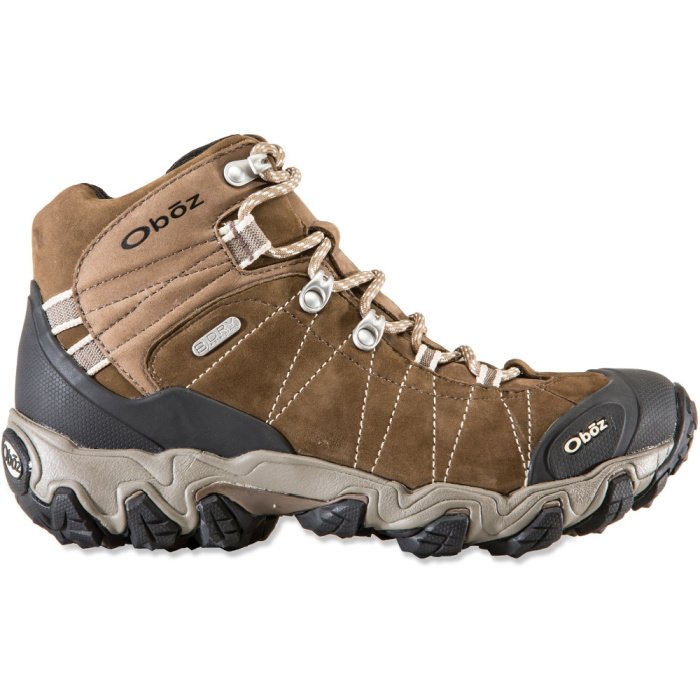
Women’s Oboz Bridger WP
Most Supportive Hiking Boots
CleverHiker Rating: 4.2/5.0
Price: $200
Weight (Pair): 2 lb. 5.4 oz.
Upper Material: Nubuck leather/B-DRY membrane
Pros
- High level of support
- Excellent traction
- Exceptional durability
- Stout toe cap
- Wide sizes available
Cons
- On the heavy side
- Stiff
- Require longer break-in period
- Cuff height can feel restrictive
With their premium insoles and multidirectional traction pattern, the Oboz Bridger WP are designed to be extremely supportive and versatile. The deep lugs on the soles extend over the sides to provide grip no matter what angle your foot strikes the ground.
The stiff construction of the Bridgers requires a bit of break-in, but these boots make up for it in long-term durability. Even after breaking in, they’re stiffer than many other boots on this list, but we see this as a good thing if you’re looking for extra support and stability. The sturdy nylon shank and plastic forefoot plate help prevent shaky footing and ankle rolls.
Though these boots are overkill for many hikers, those who need a dependable and supportive option for backpacking with a heavier pack or for challenging day hikes over rough trails will appreciate the sturdy build of the Bridgers.
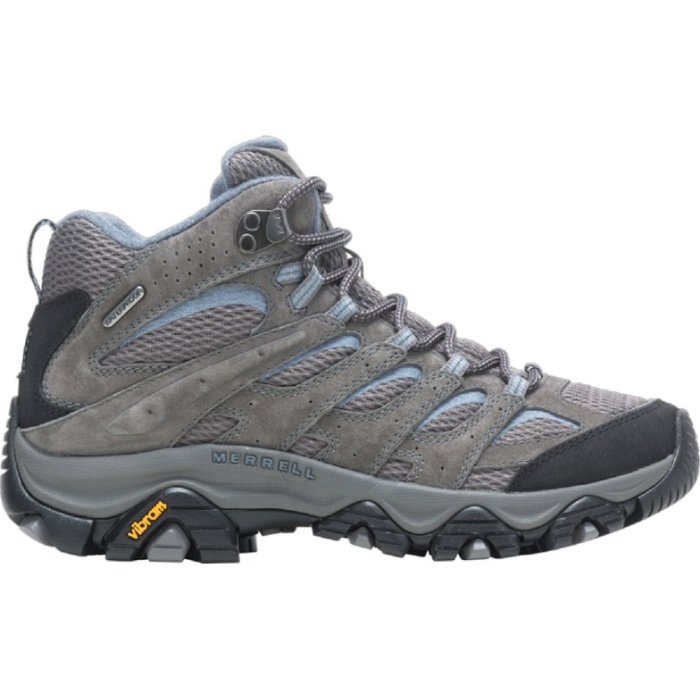
Women’s Merrell Moab 3 WP
Best Budget Hiking Boots
CleverHiker Rating: 4.1/5.0
Price: $150
Weight (Pair): 2 lb. 0.5 oz.
Upper Material: Pigskin leather/mesh/waterproof membrane
Pros
- Affordable
- Very little break-in required
- Durable
- Breathable for a waterproof boot
- All-day comfort
- Protective toe cap
- Wide sizes available
Cons
- Not as supportive as some
- Bulkier than some
Don’t mistake the low price of the Merrell Moab 3 WPs to mean lower quality. These tried-and-true hiking boots have reigned as the top choice for budget-conscious hikers for as long as we can remember. They’re our top recommendation if you’re after a midweight boot for day hiking and everyday wear.
These shoes are comfortable, durable, and require very little break-in before they’re trail-ready. They’re also more breathable than many other waterproof boots thanks to the mesh panels in the uppers.
Because they feel a little bulkier than some of our lightweight favorites, they aren’t our first choice for big-mile days. But they’ll last a long time, and they’re some of our go-tos for day hikes and weekend trips when the weather and trail call for more protection than a hiking shoe can offer.
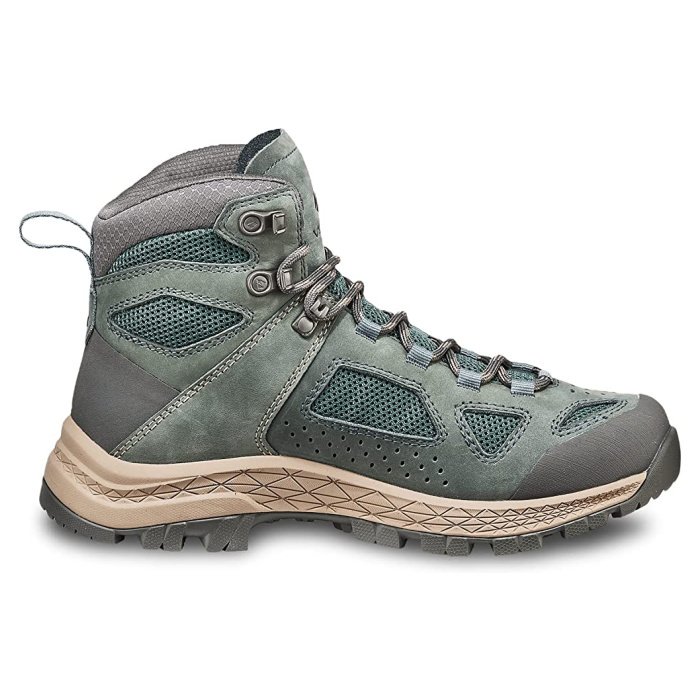
Women’s Vasque Breeze
Budget-Friendly Hiking Boots with Great All-Around Performance
CleverHiker Rating: 4.0/5.0
Price: $160
Weight (Pair): 2 lb. 3.9 oz.
Upper Material: Nubuck leather/VasqueDry membrane
Pros
- Less expensive
- Very breathable for waterproof boots
- Great quality for the price
- Supportive
- Protective toe cap
- Very little break-in required
- Wide sizes available
Cons
- A bit heavy
- Waterproofing wears out quicker than others
The latest Vasque Breeze boots put a fresh spin on the tried-and-true originals. The newest Breeze model is made with recycled materials and has an updated design.
What really stands out about the Breeze compared to other hiking boots is how breathable they are for waterproof footwear. Mesh panels throughout the boots help your feet breathe and allow them to dry faster when they get wet. The Breezes are also comfortable right out of the box – they require very little break-in since they’re flexible and a bit lighter than many other traditional boots.
That said, the waterproofing relies on a proprietary membrane (VasqueDry) that can wear out quicker than the more common GORE-TEX or eVent membranes. We hope to see this improved in future iterations, as we’ve always really liked the comfort of the Breeze boots.
If you’re not often hiking in wet environments, the relatively affordable price point of the Vasque Breeze may still be worth the tradeoff in waterproofing. But hikers who go out no matter what the weather report says will probably be better off with the Merrell Moab 3 WPs which cost even less but are just a bit bulkier.
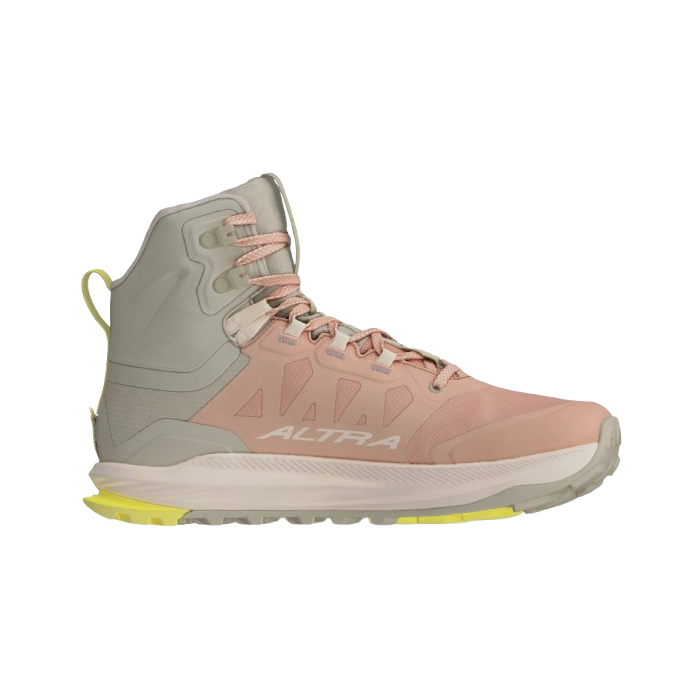
Women’s Altra Lone Peak 9 Waterproof Mid
Ultralight Hiking Boots with a Wide Toe Box
CleverHiker Rating: 3.9/5.0
Price: $180
Weight (Pair): Synthetic waterproof bootie
Upper Material: Synthetic waterproof bootie
Pros
- Ultralight
- Wide toe box
- Very breathable for a waterproof boot
- No break-in required
- Good for lightweight backpacking
Cons
- Less durable than many others
- Not very supportive
The Altra Lone Peak 9 Waterproof Mid are much lighter and less bulky than traditional boots, so they’re perfect for hikers and backpackers who want the extra waterproofing of a boot without the stiffness and burly support.
The waterproof layer is an eVent membrane which is noticeably more breathable than the more common GORE-TEX linings, but it’s not quite as durable. That said, we find the flexibility and low weight of the Lone Peaks to be well worth that tradeoff when we’re logging lots of miles.
The latest iteration of these shoes is more supportive than previous models, but the Lone Peaks offer a lower level of support overall than some of the beefier boots on our list. For fast and light adventures that call for more protection than a trail runner can provide, the Lone Peak 9s can’t be beat.
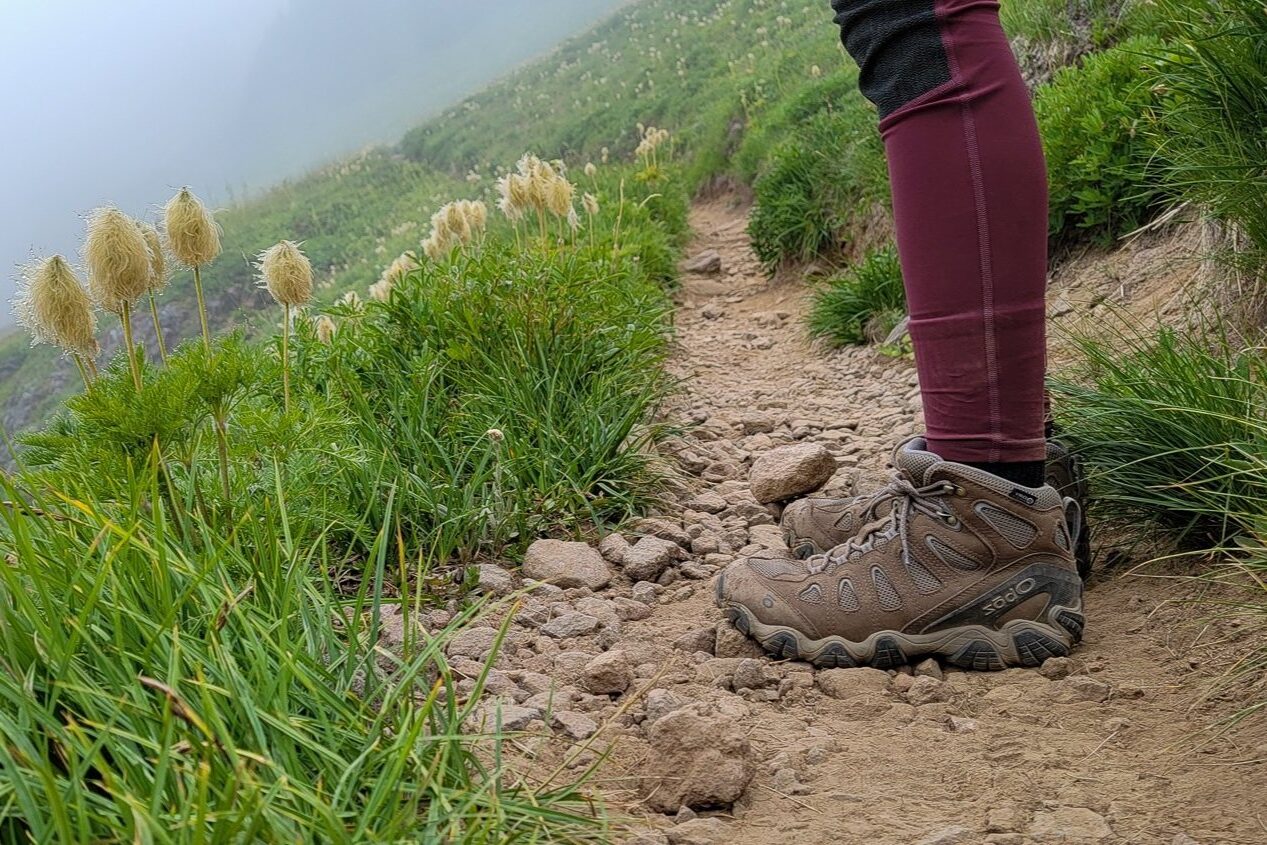
Product Comparison Table
| oSort | Product | Price | Weight (Pair) | Upper Material | Comfort | Ankle Support | Traction | Weather Resistance | Weight Score | Durability |
|---|---|---|---|---|---|---|---|---|---|---|
| 0 |
Lowa Renegade EVO GTX View at REI View at Amazon |
$265 | 2 lb. 6.1 oz. | Nubuck leather/GTX membrane | 4.8 | 4.8 | 4.5 | 4.8 | 3 | 4.8 |
| 1 |
La Sportiva Nucleo High II GTX View at REI View at Amazon |
$239 | 1 lb. 10.8 oz. | Nubuck leather/GTX SURROUND membrane | 4.3 | 4.5 | 4.8 | 4.5 | 4.3 | 4.8 |
| 2 |
Salomon Quest 4 GTX View at REI View at Amazon |
$230 | 2 lb. 10.9 oz. | Leather/textile/GTX membrane | 4.5 | 5.0 | 3.8 | 4.3 | 2.5 | 4.3 |
| 3 |
Salewa Alpenrose 2 GTX View at Amazon View at Moosejaw |
$190 | 1 lb. 9.8 oz. | 3F System with Kevlar Cables/mesh/GTX Extended Comfort | 4.5 | 3.8 | 4.5 | 4.3 | 4.8 | 4.3 |
| 4 |
Salomon X Ultra 4 GTX View at REI View at Amazon |
$175 | 1 lb. 10.1 oz. | PU-coated leather/textile/GTX laminate | 4.0 | 4.3 | 4.0 | 5.0 | 4.5 | 4.5 |
| 5 |
Topo Trailventure 2 WP View at Amazon View at Zappos |
$180 | 1 lb. 12.2 oz. | Mesh/eVent liner | 4.8 | 3.8 | 4.3 | 3.8 | 4.3 | 3.8 |
| 6 |
KEEN Targhee IV WP View at REI View at Amazon |
$170 | 2 lb. 2.6 oz. | Oiled nubuck leather/KEEN.Dry membrane | 4.3 | 4.0 | 4.3 | 4.5 | 3.8 | 4.0 |
| 7 |
Oboz Bridger WP View at REI View at Amazon |
$200 | 2 lb. 5.4 oz. | Nubuck leather/B-DRY membrane | 4.0 | 4.3 | 4.5 | 4.0 | 3.5 | 4.5 |
| 8 |
Merrell Moab 3 WP View at REI View at Amazon |
$150 | 2 lb. 0.5 oz. | Pigskin leather/mesh/waterproof membrane | 5.0 | 3.8 | 4.0 | 4.0 | 4.0 | 4.0 |
| 9 |
Vasque Breeze View at Amazon View at Backcountry |
$160 | 2 lb. 3.9 oz. | Nubuck leather/VasqueDry membrane | 4.3 | 4.3 | 3.8 | 4.0 | 3.8 | 3.8 |
| 10 |
Altra Lone Peak 9 Waterproof Mid View at REI View at Amazon |
$180 | Synthetic waterproof bootie | Synthetic waterproof bootie | 3.8 | 3.3 | 4.0 | 3.5 | 5.0 | 3.3 |
How We Test & Methodology
We analyze how well boots perform in metrics like comfort, ankle support, weight, traction, weather resistance, and durability. To find out how each pair stacks up, we put every pair we test through the wringer mile after mile on trail to determine the benefits and drawbacks of each pair.
COMFORT
We conduct extensive field tests, wearing the boots day after day over dozens of miles on different types of terrain to gauge how well they handle various hiking conditions. We assess the fit of every pair, making sure they allow for toe spread and provide plenty of cushioning through the midsole and heel to accommodate different foot shapes. We pay especially close attention to pressure points, hotspots, and arch support during both short and long hikes. Boots with a flexible upper that moves with the natural step of the user tend to be the most comfortable since flexible ankle coverage offers support while reducing fatigue.
ANKLE SUPPORT
To test for ankle support in women’s hiking boots, we take every pair out on the trail for day hikes, overnights, and long trips. We conduct rigorous field tests on uneven and rocky terrains to see how well the boots stabilize our ankles during lateral movements and abrupt stops to assess the boots’ ability to prevent rolling and sprains. We look for features like reinforced material around the ankle, and a secure lacing system that helps reduce the risk of injury and provide excellent stability. We evaluate the boot’s construction, focusing on the height and stiffness of the ankle collar. Additionally, we measure the boot’s responsiveness by having testers carry heavy backpacks, when ankle support is critical, and enhances overall comfort and confidence during hikes.
TRACTION
Our testers hike on wet rocks and muddy trails, loose gravel, and steep inclines so we can evaluate the grip of every pair of boots we test. We look for slip resistance on both dry and wet surfaces to understand how the boots maintain traction in different weather conditions. We also perform sudden stops and quick directional changes to assess how well the boots handle abrupt movements. We analyze the rubber compound used in the outsole, since these blends significantly impact grip, paying close attention to the lug pattern and depth.
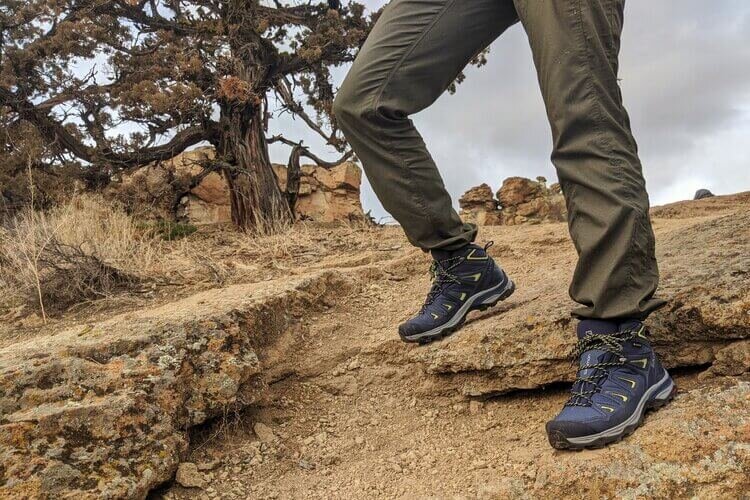
WEATHER RESISTANCE
We hike year-round in the rain, snow, and mud to observe how well boots keep our feet dry and comfortable. We also take them out on hot and humid routes to fully evaluate how well they manage internal moisture without compromising dryness. We also dunk them in water many times during the testing period, fully submerging them to assess any waterproof claims.
WEIGHT
We wear the boots on long-distance hikes to evaluate how the weight of each pair impacts our overall endurance, strain on the legs and feet, as well as fatigue. We include a ton of steep uphill and downhill sections to understand how their bulk, heft, and weight affect balance and agility over time. We also weigh boots to get precise measurements. We consider the material composition to understand how the boots’ construction influences their bulk and weight.
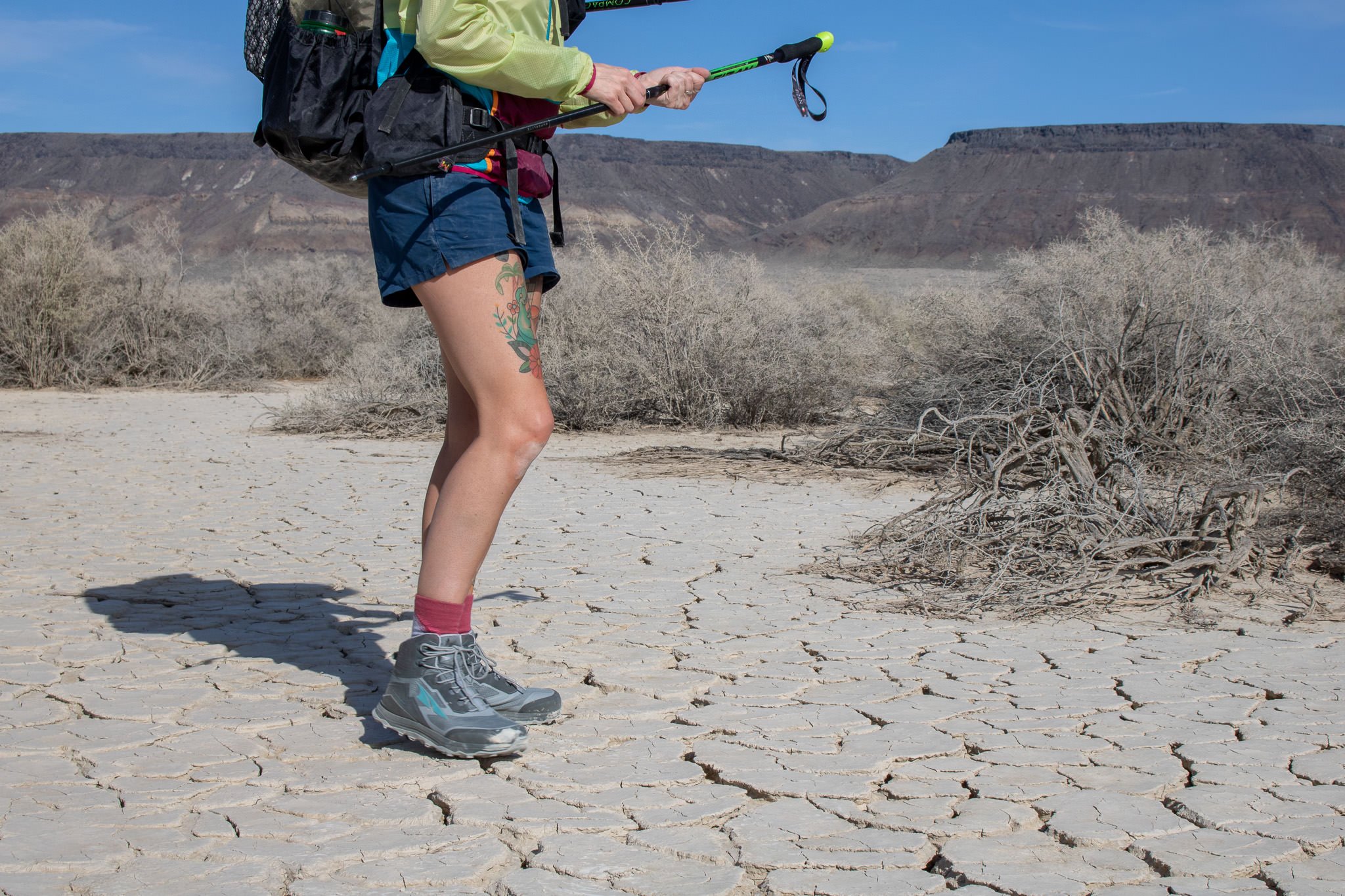
DURABILITY
To test for durability, we put every pair of boots through rigorous short-term and long-term field tests. These primarily involve hiking on rocky trails, and bushwhacking through rough vegetation. We perform stress tests by applying pressure to the soles and bending the boots to check for signs of weakness or failure in the materials. We carefully examine the materials and construction, with top performers in this metric offering reinforced stitching, high-quality leather, or burly synthetic fabrics. We also evaluate the outsole’s wear pattern every 25 miles, checking for wear on the lugs and tread to gauge long-term performance. We track the boots’ performance over weeks and months of a hiking season, monitoring for issues like sole separation, fabric tearing, and seam breakdown.
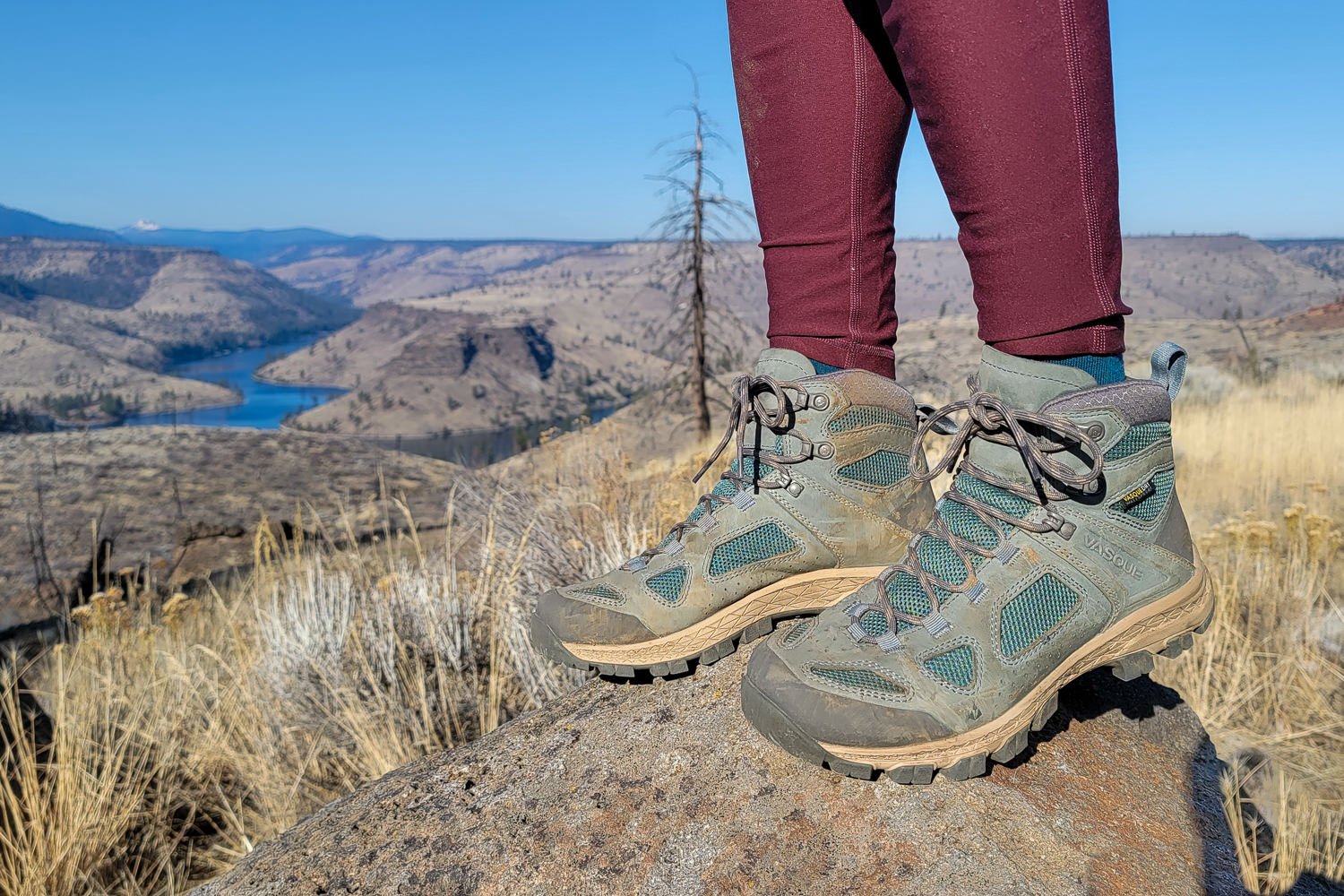
Why Trust CleverHiker
With a collective 2,000 days of hiking experience, the CleverHiker team is well-versed in what makes hiking boots truly exceptional. Gear Analyst, Casey Handley, has tackled thousands of miles on her thru-hikes of the Appalachian Trail, Colorado Trail, and Arizona Trail, to find the best of the best when it comes to women’s hiking boots. Her thorough testing in rain, snow, and blazing hot days guarantees only the finest footwear makes it onto our list. Her background in gear sales and in-depth product reviews ensures a high standard of quality and functionality. Casey’s deep understanding of long-distance hiking means her recommendations are tailored for hikers of all abilities.
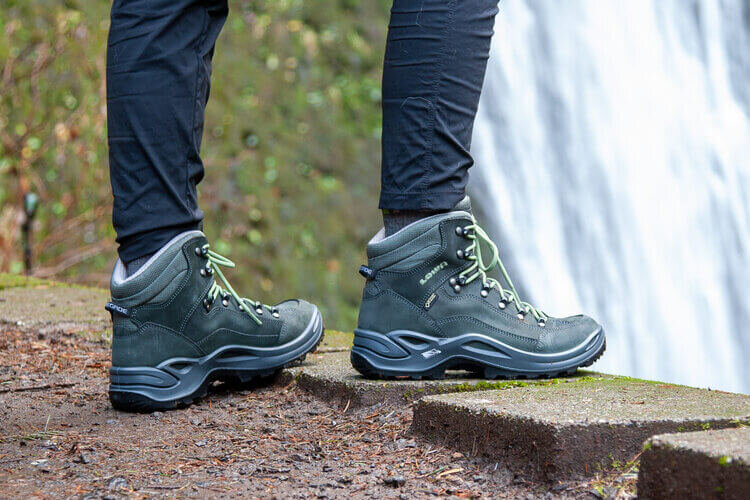
Analysis & Results
Lace-up and scroll down to find out which hiking boots are the best when it comes to comfort, ankle support, traction, weather resistance, weight, and durability.
VALUE
High-quality footwear can be expensive, but not every pair will blow a hole in your wallet. Finding good value is about performance above and beyond what you would expect. With that in mind, we look for premium models that stand out above the rest as well as more budget-friendly options that do better on trail than their price tag might suggest.
When it comes to getting the most value for your money, the top contenders are the Women’s Merrell Moab 3 WP, Women’s Topo Trailventure 2 WP, and the Women’s Lowa Renegade GTX boots. These models all offer a great blend of durability, comfort, and performance at an excellent price. The Women’s Merrell Moab 3 WP offers outstanding value thanks to its waterproof construction and durable Vibram outsole, making it a reliable, super comfy, and affordable choice for all-weather hiking with almost no break-in period.
The Women’s Topo Trailventure 2 WP is a great deal thanks to its lightweight design and wide toe box, providing comfort and stability on challenging trails without breaking the bank. Lastly, the Women’s Lowa Renegade GTX stands out for its top-notch Gore-Tex waterproofing and sturdy construction, offering high-end performance and nearly unrivaled durability that helps these boots last for years.
COMFORT
We look for out-of-the-box wearability with short break-in times, and the Merrell Moab 3, Lowa Renegade GTX, and Topo Trailventure 2 check every box for comfort. Our top pick, the Moab 3, offers a contoured footbed with zonal arch and heel support that will cradle your foot from sunrise to sunset on the trail. The highly breathable mesh lining, padded collar, and cushy tongue add tons of extra cushioning and reduce friction, and the lacing system is nuanced to dial in the right fit for long hikes on different terrain.
We love the Lowa Renegades – their cushioned footbed wicks moisture with ease and helps regulate temperature, so your feet will stay dry and comfortable as you hike. The soft leather lining and luxurious midsole lend the boot excellent support and shock absorption so you can keep your energy up on those long-distance hikes.
The Topo Trailventure 2s are also remarkably comfy thanks to one of the roomiest toe boxes on any boot we tested. Your toes can splay naturally, which helps reduce pressure points and enhance overall comfort. The more flexible outsole, ultra-cushy footbed, and breathable lining make this one easy to wear all day.
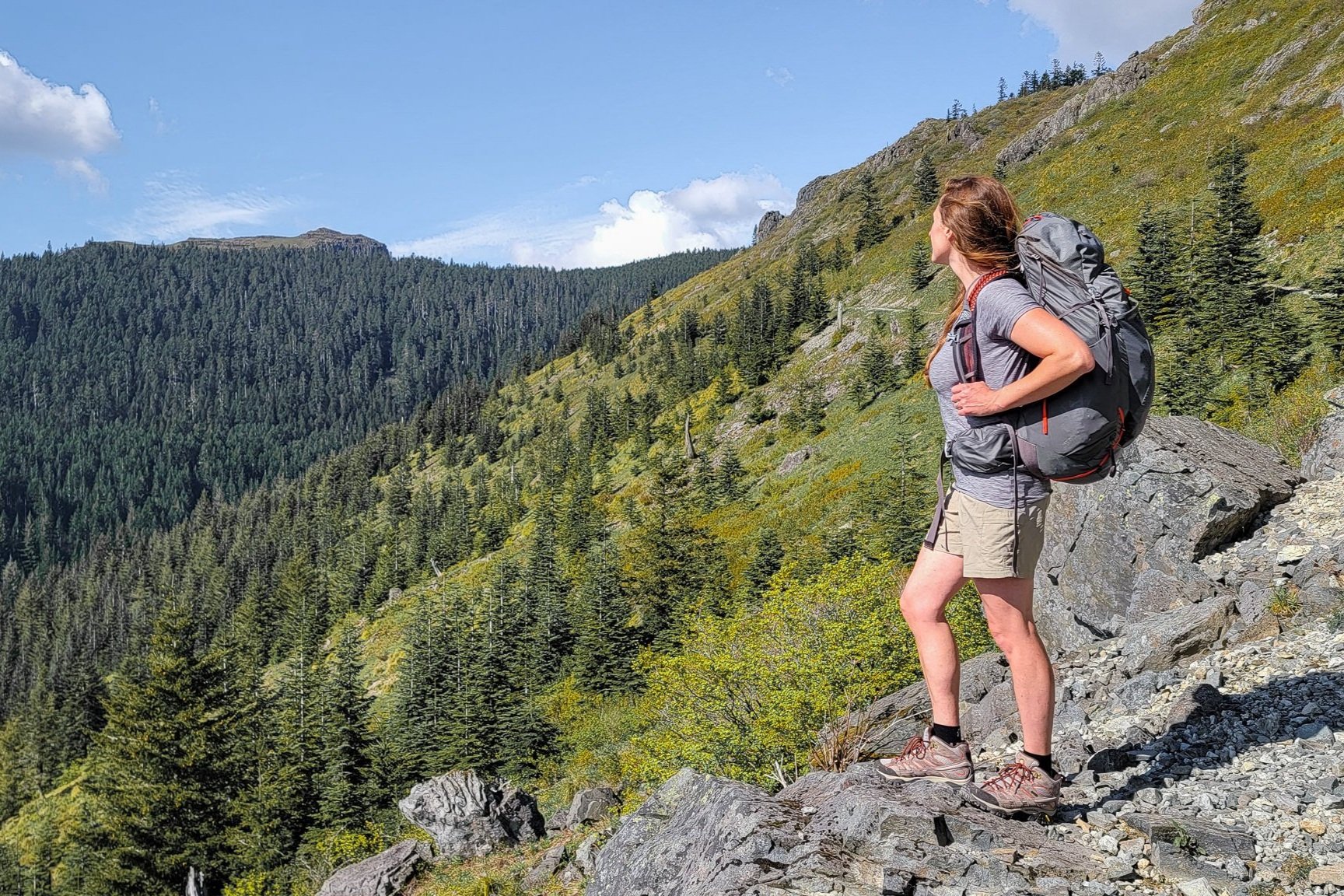
ANKLE SUPPORT
If your top priority is ankle support, the best options for you are the Women’s Salomon Quest 4 GTX, Women’s Lowa Renegade GTX, and the Women’s La Sportiva Nucleo High II GTX. These boots all offer taller cuts with robust ankle support, durable materials, and stable Vibram outsoles to keep you steady and pain-free on the trail.
The Women’s Salomon Quest 4 GTX stands out with its high-cut design and 4D Chassis, offering excellent lateral stability and reducing foot fatigue over long distances. Its lacing system provides a secure fit – meaning less adjusting and more adventures – that lets you dial in both your ankle support and confidence on uneven terrain.
The Women’s Lowa Renegade GTX is a close second, featuring a burly, long-lasting nubuck leather upper complemented by a cushy footbed that provides excellent stability and cushioning. Plus, the supportive midsole and ergonomic design will keep you feeling strong and stable year-round, from icy sidewalks to dusty trails.
The Women’s La Sportiva Nucleo High II GTX also excels with its tall collar, excellent lacing system, and lightweight build. This boot offers agile support and flexibility on technical trails and keeps your foot locked in place beneath abrasion-resistant materials that are protective and durable.
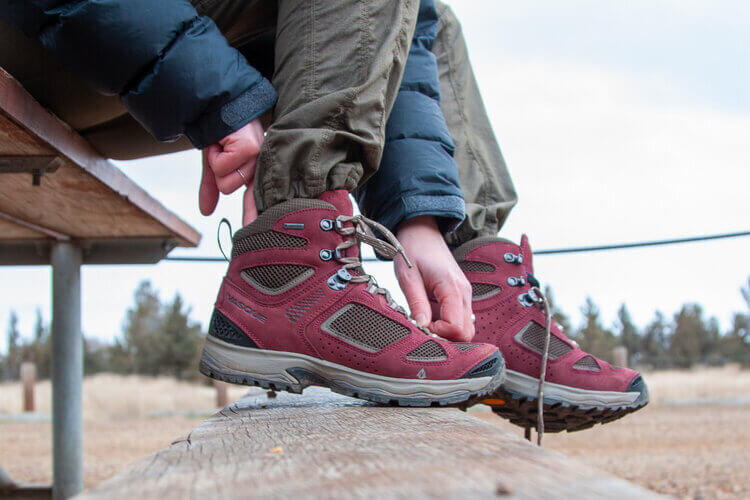
TRACTION
The gold standard for traction in women’s hiking boots are the La Sportiva Nucleo High II GTX, Salewa Alpenrose 2 GTX, Oboz Bridger WP, and the Lowa Renegade GTX. All these boots offer serious traction on slippery, mucky, and icy surfaces with their robust Vibram outsoles, waterproof Gore-Tex membranes, and lug patterns optimized for stability.
Both the La Sportiva Nucleo High II GTX and the Lowa Renegade GTX offer aggressive Vibram outsoles that lend steadfast grip on gnarly terrain, making either boot a great choice for navigating steep ascents and slippery descents with confidence.
We also love the sticky Pomoca outsole of the Women’s Salewa Alpenrose 2 GTX which offers dependable traction and stability almost everywhere to maintain stable footing on technical trails and challenging terrain. The Women’s Oboz Bridger WP features a Granite Peak outsole, known for its durability, excellent lug pattern, and tacky grip, providing secure footing on rugged paths and in wet conditions.
WEATHER RESISTANCE
For folks who need the ultimate in protection from wind, rain, snow, and mud, look no further than the Salomon X Ultra 4 GTX, Lowa Renegade GTX, La Sportiva Nucleo High II GTX, and the KEEN Targhee IV WP.
The X Ultra, Renegades, and Nucleo High IIs feature a robust and waterproof Gore-Tex membrane that gives outstanding protection against moisture to keep your feet dry and comfy in the worst weather. The Targhee uses KEEN’s waterproof liner, which functions similarly to the Gore-Tex on the other models and is excellent at repelling water.
The X Ultra and Nucleo High offer synthetic blends on the uppers that are stellar for lightweight, 360-degree waterproof protection, whereas the Renegades and the Targhee use a blend of performance leather and mesh to achieve a super durable upper that blasts through the worst conditions. All models feature strong toe caps, fast-drying laces, and high collars that make these the most weather-worthy on our list.
WEIGHT
The lightest boots on our list are the Women’s Altra Lone Peak 9 Waterproof Mid, Women’s Salewa Alpenrose 2 GTX, and the Women’s Salomon X Ultra 4 GTX. These models lead the pack thanks to their lightweight construction, waterproof liners, and sturdy synthetic materials.
The Women’s Altra Lone Peak 9 Waterproof Mid shines with its featherweight design at barely over a pound and a half for the pair, which it achieves through a breathable quick-dry mesh upper, lightweight EVA midsole, and soft but sturdy cushioning for comfort and responsiveness. Weighing in at 1 pound, 9.8 ounces, the Women’s Salewa Alpenrose 2 GTX is a close second with a durable synthetic upper, responsive midsole with generous cushioning, and a precise fit that makes for an incredibly stable and supportive ride. The Women’s Salomon X Ultra 4 GTX tips the scales at 1 pound, 10.1 ounces, thanks to its airy but strong Contagrip outsole, advanced chassis for stability, and a snug, no-frills fit.
DURABILITY
If you’re looking for boots that will last for years even with regular use, the most durable boots on our list are the Salomon X Ultra 4 GTX, Lowa Renegade GTX, and La Sportiva Nucleo High II GTX. All three models have waterproof Gore-Tex liners that contribute to their longevity as well as burly and abrasive outsoles that last season after season.
The Salomon X Ultra 4 GTX is our top pick, featuring a robust synthetic upper that withstands abrasion and wear over extended use. Its advanced snug fit enhances durability by minimizing friction points, making it ultra-resilient in rough terrain and frequent hikes. The Renegades also leads the pack for their durable Nubuck leather upper, which we’ve found can handle the most punishing hikes in the worst conditions and holds up extremely well. Its strong PU overlays act as a frame around the bottom of the boot to contribute to its top-tier stability and durability without adding unnecessary weight.
And, we highly recommend the La Sportiva Nucleo High II GTX. This model excels in durability with its hybrid leather and abrasion-resistant mesh upper, built to withstand rough trails and harsh weather conditions.
How to Choose Hiking Boots
BOOTS VS. SHOES VS. TRAIL RUNNERS
Hiking footwear is a really personal choice, and people often have differing opinions on what type of shoe works best for hiking. We tend to prefer lightweight trail runners since they’re more comfortable to hike long distances in and they’re typically more breathable. Traditional hiking boots – especially those made with leather – are going to be more durable, but they’re typically significantly heavier/bulkier. Here’s an article that will help you decide which style works best for you.
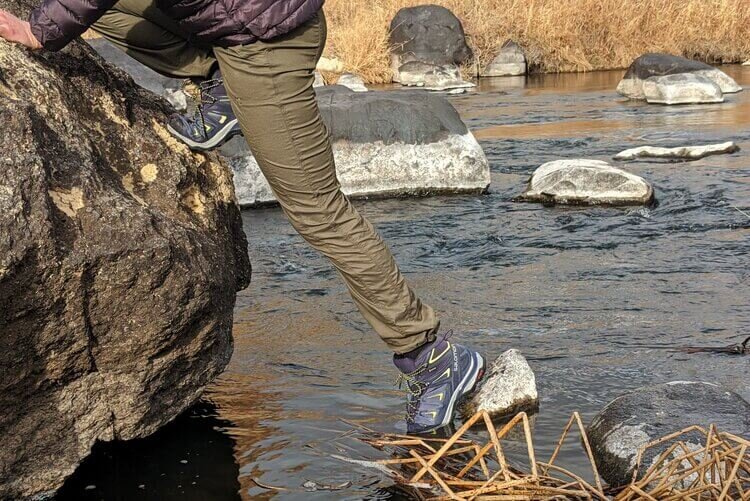
SIZING
Feet can swell during long days on the trail, so it’s good to buy hiking footwear at least a half size larger than your normal shoes. A good way to test sizing on your boots is to loosen all the laces, situate your foot so that your toes touch the front of the toe box, and then make sure you can put your index finger between your heel and the back of the boot. This will ensure that your toes don’t slide forward and hit the toe box on downhill sections of trail. You should also consider which socks you’ll be wearing and if you’ll be adding aftermarket insoles when choosing a size. It’s much better for footwear to be a little big than too small.
BREAK-IN PERIOD
You’re going to take thousands of steps on any backpacking or hiking trip, so you need to know that your footwear will fit comfortably and won’t cause blisters. We recommend buying your footwear at least a few weeks before any long hiking trips and spending as much time in them as you can. This will allow your new hiking boots to soften up, and you can make sure they work well for your feet. If you notice any issues, it’s much easier to address them before you head into the backcountry.
TRACTION
Traction is one of the most important aspects of backpacking and hiking footwear. Your hiking boots will take you over narrow and rocky ridgelines, through slippery water crossings, and across loose scree fields. Knowing that your footwear will keep you from slipping is crucial, especially over washed out or exposed sections of trail. We heavily factored quality traction into all of our footwear recommendations.
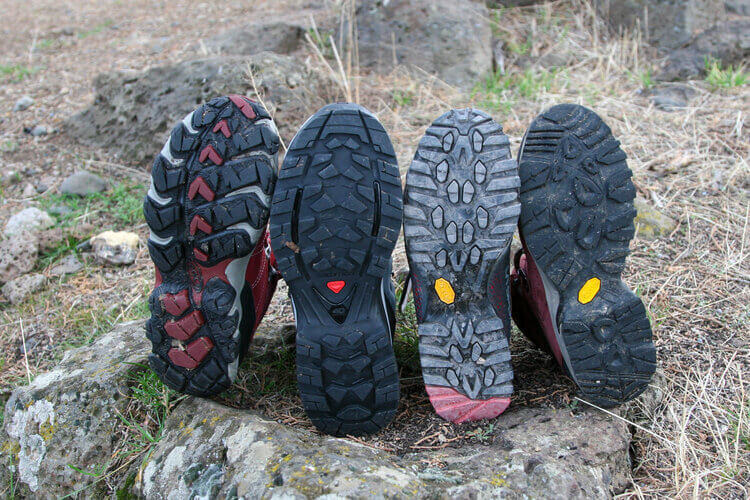
MANAGING MOISTURE & BLISTERS
If you’re on an extended trip with lots of water crossings or hiking in persistently wet conditions, your feet will likely get wet whether your footwear is waterproof or not. Wet feet can lead to hot spots and blisters, so it’s critical to know how to manage moisture, prevent, and treat blisters.
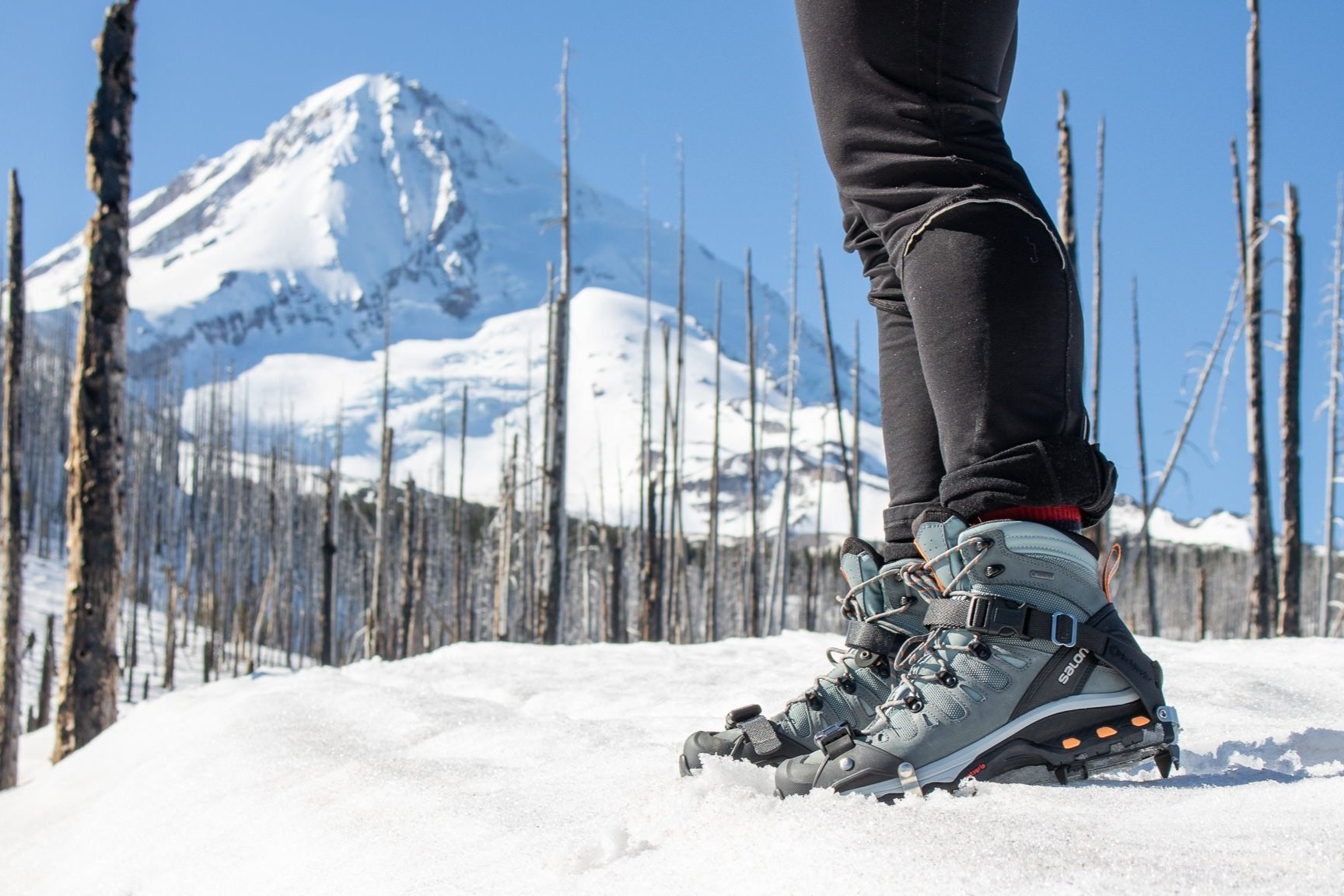
WATERPROOFING TREATMENTS
Waterproof footwear is ideal for soggy day hikes, but it’s important to remember that “waterproof” doesn’t mean that water can never get in. Water will always find a way in during a prolonged downpour and light rain can drip down your legs and into the top of your boots. Even the highest quality boots will develop small holes that allow moisture to creep in over time. Waterproof treatments are not permanent, you’ll eventually need to reapply a treatment to keep your shoes sealed.
SOCKS
We’ve found that wearing quality socks makes a big difference in how long we can keep our feet happy and in good shape on trail. Hiking socks should be comfortable, durable, and made with materials that wick moisture away from your skin. Check out our Best Hiking Socks list to see our top picks.

INSOLES
Aftermarket insoles can help alleviate a variety of shoe discomforts on the trail. If you suffer from plantar fasciitis or you just need more cushioning and support in an otherwise rigid shoe, swapping insoles may be your solution. Insoles can also help take up a little extra space in footwear for a customized fit if you’re between sizes.
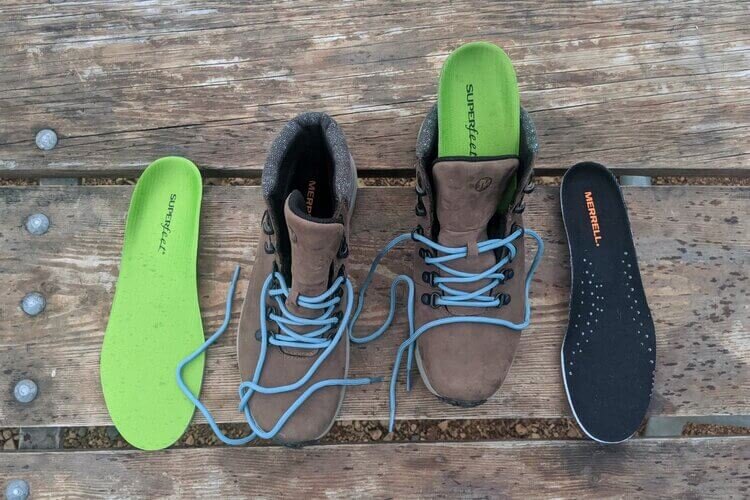
Conclusion
We hope this guide helps you hit the trail with confidence in the perfect hiking boots for your next adventure. The best hiking boots are supportive, comfy, and durable – but most importantly, they fit your specific foot shape and needs. Whether you’re looking for lightweight options to tackle a weekend hike in the height of summer, or you prefer burly boots with rugged durability for tough shoulder season backpacking, you’ll be ready to take on mile after mile with happy feet.
